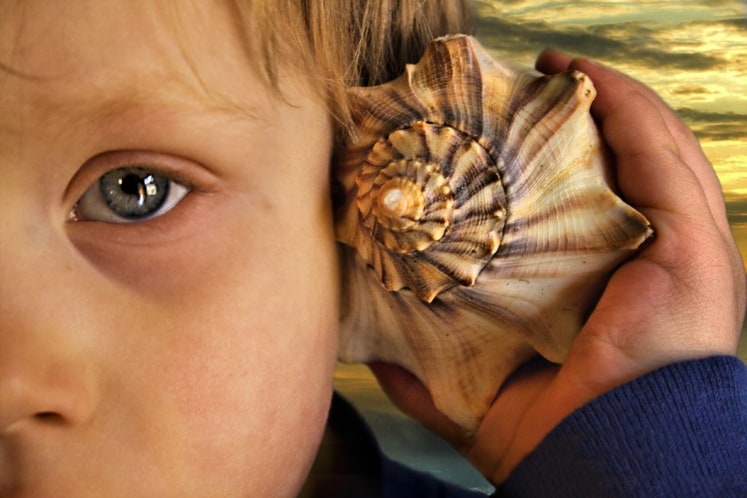What Does It Mean to Give a Child an Idea?

There are some teachers that we never forget. Some teachers have a special place in our hearts. They had something that the others just couldn’t touch. As children, we didn’t recognize it, we just knew that while in their class we never felt like we were learning and we always walked away feeling kinder and more aware of those around us.
We always walked away with an idea; some way that we wanted to make the world a better place.
Mine was Mrs. Brown. She was my fourth grade teacher and she was a story-teller. I never knew she was teaching, I just thought that she had figured out some way to cheat. I thought that she had learned of a way to magically get the facts in our heads so that she could tell stories all day.

Ideas Wrapped in Facts
I remember one particular lesson where she told one of these stories of hers. The subject was math and the new concept was borrowing. The problem was 34 minus 27. The lesson went something like this:
One day, a woman was making a cake for her husband. Oh, he was going to be surprised! (She pointed to the ones place in the problem) The woman needed more sugar. She only had four cups. Her neighbor was a nice lady, too. So she walked over to her neighbor and knocked on her door. Knock, knock. Her neighbor kindly shared her sugar. Now the neighbor had 2 cups of sugar and the woman had one more. (She crossed out the 3 making it a 2 and added a tiny 1 in front of the 4) When he got home, she and her husband ate cake.
I had been struggling with borrowing and this totally made sense to me. I got it! Not only that but I went home and asked mom if we could make cake to give to people. I thought about the kind neighbor and wanted to share my things. I thought about how the woman asked for help from her neighbor and I wanted to ask for help when I needed it.
Mrs. Brown knew how to give a child an idea; an idea that became their own.
Education is About Ideas
Here are some facts about Abraham Lincoln:
Abraham Lincoln was the 16th President of the United States. He was sometimes called “Honest Abe” because of his reputation of being honest. Growing up, he worked as a shopkeeper.
— A random history textbook
These facts might be found in any average history textbook.
Now, here is a passage from a book that we used this year in school:
Once, when by mistake he had taken more than was due from a customer, he walked several miles the same night to return the money. When he found that, by using the wrong weight, he had given a woman two ounces of tea less than she ought to have had, he again walked a long distance in order to make the matter right.
— First Book in American History by Edward Eggleston
When I finish reading the first passage, I might think “That’s interesting.”
When I read the second passage, I think, “Am I that honest? I want to be that honest. He was also very kind. He did that at night? Wow!”
The second passage gives me ideas. Ideas are a very important part of education. Ideas are what teach children to think for themselves.
When I begin teaching any subject, I think about the facts that need to be taught. Then, I find a book that presents these facts all wrapped up in ideas. Education is not about facts, it is about ideas.
Learning the facts is pointless if your child ends up without any ideas of his own; nothing to inspire him and make him think and reach higher. Facts just touch the surface. Ideas reach the heart. They bring life to the lesson. They make it memorable.
Leave the Moral to the Kids
I remember last year, we were reading about Sacagawea. The story was from a book that presented facts wrapped up in ideas. The author told of Sacagawea’s unending devotion to her infant son, Pomp. The story told of how she cared for him even in the toughest of situations. It brought a tenderness out of both of my boys. Of course, the story presented all of the usually facts, too. It just did so in a way that the heart of the story was what was highlighted and not the facts.
I was very careful not to give my version of the ‘moral of the story’ each day. That should be left to each child to decide what speaks to them. Upon hearing a story, each child might get a different idea from it. I just read it, or let them read it, and then let it sink into their hearts.

The Idea Becomes Their Own
Ideas can’t come from the teacher. Too many teachers give everything to children without the children ever having to find out anything for themselves or think for themselves. The ideas, then, never get into the child’s heart and become their own. They are not the child’s ideas.
Charlotte Mason said to give children the great ideas of life, clothed upon with facts, and then leave the child to deal with these as he chooses. People think that children can’t come up with the moral of the story unless you tell them. People don’t give kids enough credit. Kids are usually even better at this than adults are.
When planning your school year, why not pick out some books that give your children some ideas. In the homeschool world, these are called living books. There are even entire curriculums built around them. These books make the school day more than just a time spent trying to fill the child’s head with facts, but a time spent filling their hearts with ideas. Now, there’s a powerful …idea!







Leave a Reply